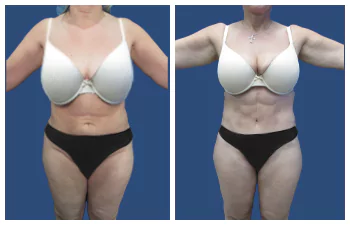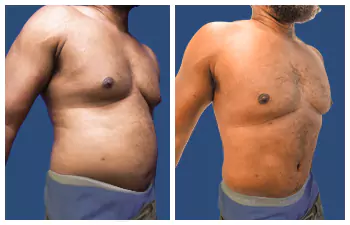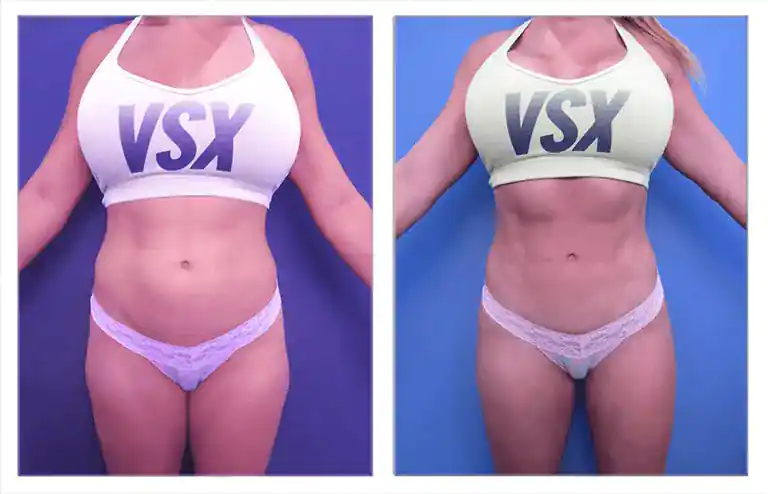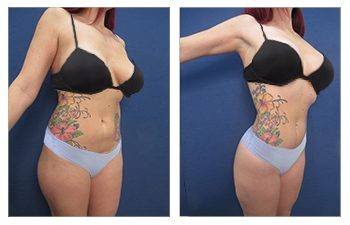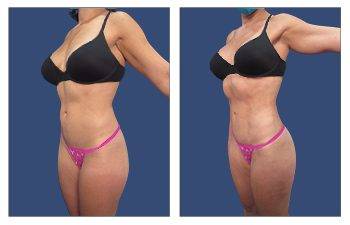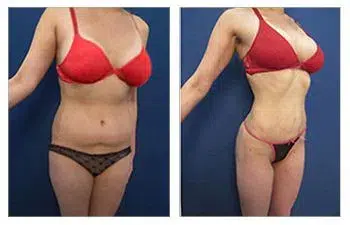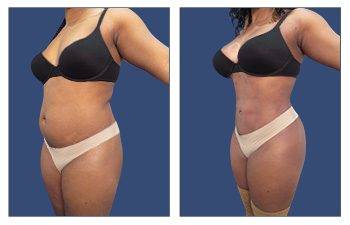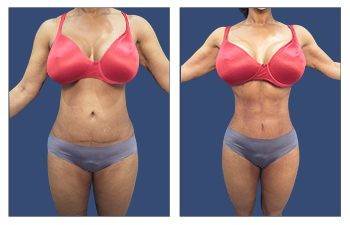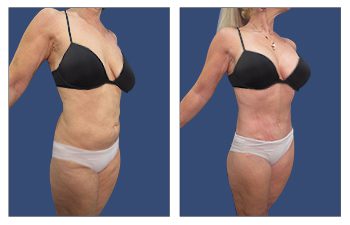What is a flat butt?
A flat butt is a term used to describe a lack of roundness and volume in the buttocks. This can be caused by a variety of factors, including genetics, lack of muscle tone, or a sedentary lifestyle. Many people desire to have a fuller, more sculpted derrière and may turn to exercise, diet, or even surgical procedures to achieve their desired shape. In some cases, a flat butt may also be related to posture or alignment issues that can contribute to the appearance of a flatter rear. Regardless of the cause, individuals may seek out various methods to enhance and lift their buttocks to achieve a more shapely and firm appearance.
Pancake Butt
Pancake butt, also known as a flat or saggy butt, can be caused by a variety of factors including a loss of fat and muscle in the buttocks. This can be exacerbated by sedentary behavior, poor posture, and sitting for long periods of time, leading to conditions such as gluteal amnesia and dead butt syndrome. These conditions contribute to weak and underactive glute muscles, causing the butt to appear flatter and less defined.
Developing a stronger and more defined butt is important for overall physical health, range of motion, and flexibility. Strong glute muscles support the pelvis and lower back, improve posture, and help with movements such as walking, running, and squatting.
To improve the shape and strength of the butt, incorporating targeted exercises and activities is essential. Uphill walking, stair climbing, and sprinting are effective for engaging the glute muscles and building strength. Additionally, exercises such as squats, lunges, hip thrusts, and deadlifts can help activate and strengthen the glute muscles, leading to a more shapely and toned butt.
By addressing the causes of pancake butt and incorporating targeted exercises, it is possible to improve the strength and appearance of the buttocks, leading to better overall physical health and function.
Pancake butt, also known as a flat or saggy butt, can be caused by a variety of factors including a loss of fat and muscle in the buttocks. This can be exacerbated by sedentary behavior, poor posture, and sitting for long periods of time, leading to conditions such as gluteal amnesia and dead butt syndrome. These conditions contribute to weak and underactive glute muscles, causing the butt to appear flatter and less defined.
Developing a stronger and more defined butt is important for overall physical health, range of motion, and flexibility. Strong glute muscles support the pelvis and lower back, improve posture, and help with movements such as walking, running, and squatting.
To improve the shape and strength of the butt, incorporating targeted exercises and activities is essential. Uphill walking, stair climbing, and sprinting are effective for engaging the glute muscles and building strength. Additionally, exercises such as squats, lunges, hip thrusts, and deadlifts can help activate and strengthen the glute muscles, leading to a more shapely and toned butt.
By addressing the causes of pancake butt and incorporating targeted exercises, it is possible to improve the strength and appearance of the buttocks, leading to better overall physical health and function.
Flat butt in both men and women can have various causes, including a sedentary lifestyle, pregnancy, and postpartum core instability. A sedentary lifestyle, characterized by prolonged periods of sitting or inactivity, can lead to weakened glute muscles. This is because the glutes are not being engaged or strengthened through movement, which can result in a less shapely and developed butt.
For women, pregnancy can also contribute to a flat butt. The weight gain and hormonal changes during pregnancy can lead to a weakening of the glute muscles. Additionally, postpartum core instability, which occurs due to the stretching and weakening of the abdominal muscles during pregnancy, can further contribute to weakened glutes. This can result in decreased athletic performance and everyday activities, as the glutes play a crucial role in stabilizing the pelvis and supporting the body during movement.
In both men and women, weakened glutes can lead to decreased athletic performance, such as reduced power and stability during activities like running and jumping. It can also affect everyday activities like walking, standing, and even maintaining proper posture. Strengthening the glute muscles through targeted exercises is essential in addressing these issues and improving overall performance
Conditions that cause a flat butt
1. Dormant Butt Syndrome: This condition occurs when the gluteal muscles become inactive due to prolonged sitting, causing them to weaken and lose their tone. This can result in a flat or saggy appearance of the buttocks.
2. Pregnancy-related Glute Gripping: During pregnancy, the gluteal muscles may be under increased strain, leading to tightness and gripping. This can cause the muscles to appear flattened and reduce their ability to provide support and stability.
3. Postpartum Core Stability Issues: After childbirth, women may experience issues with core stability, which can impact the function of the gluteal muscles. Weakness in the core can lead to compensatory patterns in movement, contributing to a flat butt.
These conditions can have a significant impact on everyday performance, as the gluteal muscles play a crucial role in providing stability, power, and mobility. Weak or inactive glutes can lead to decreased athletic performance, increased risk of injury, and difficulty performing daily activities such as walking, climbing stairs, or lifting objects. Furthermore, these conditions can also contribute to poor posture and chronic pain. It is important to address these issues through targeted exercise, physical therapy, and lifestyle modifications to improve gluteal strength and function.
Understanding the 3 gluteal muscles and their functions
The gluteal muscles are a group of three muscles located in the buttocks known as the gluteus maximus, gluteus medius, and gluteus minimus. These muscles play a crucial role in the movement and stability of the hips and pelvis, as well as in maintaining proper posture and balance. Understanding the functions of these three gluteal muscles is essential for anyone looking to improve their overall lower body strength, athletic performance, or even just everyday mobility. Whether you’re an athlete, fitness enthusiast, or someone looking to prevent or recover from lower body injuries, gaining insight into the specifics of the gluteal muscles and their individual contributions to movement and stability can help you develop a more targeted and effective training and rehabilitation plan. With a deeper understanding of the 3 gluteal muscles and their functions, you can work towards maximizing their potential in supporting your overall lower body health and performance.
Gluteus Minimus
The gluteus minimus is a small, fan-shaped muscle located in the buttocks, underneath the larger gluteus medius muscle. Its primary function is to stabilize and move the hip joint. The gluteus minimus helps to abduct the thigh (moving it away from the midline of the body), as well as internally rotate the thigh. It also plays a crucial role in maintaining proper pelvic alignment and stability during activities such as walking, running, and jumping.
The gluteus minimus works in conjunction with other muscles of the hip, such as the gluteus medius and the tensor fasciae latae, to provide overall stability and movement. These synergistic muscles help to control the different movements of the hip joint and ensure proper functioning during daily activities and exercise.
Common overuse injuries associated with the gluteus minimus include tendinopathy, or inflammation of the tendon, as well as muscle strains or tears. Overuse injuries can occur from activities that involve repetitive hip abduction and internal rotation, such as running, cycling, or weightlifting. Proper strengthening and flexibility exercises, along with adequate rest and recovery, are important for preventing overuse injuries in the gluteus minimus.
Gluteus Medius
To strengthen the gluteus medius and prevent gluteal amnesia, it’s important to incorporate specific exercises and stretches into your workout routine. Some effective exercises for targeting the gluteus medius include side-lying leg lifts, clamshells, and lateral band walks. When performing these exercises, focus on proper form and technique to effectively activate the gluteus medius. It’s important to engage the glutes and avoid using momentum to complete the movements.
In addition to strength exercises, incorporating stretches such as the pigeon stretch or figure four stretch can help to improve flexibility and mobility in the hips and glutes. This can help prevent tightness and imbalance in the gluteus medius.
Using a foam roller can also be beneficial for releasing tightness and tension in the gluteus medius. Roll the foam roller along the side of your hip to target this muscle, and hold on any areas of tightness for a few extra seconds to help release tension.
By regularly incorporating these exercises, stretches, and foam rolling into your routine, you can effectively strengthen the gluteus medius and prevent gluteal amnesia. Be consistent with these exercises and stretches to see improvements in your glute strength and function.
Gluteus Maximus
The gluteus maximus is the largest and most powerful muscle in the human body. It is located in the buttocks and extends from the pelvis to the upper femur. The muscle originates from the posterior ilium, sacrum, and coccyx. Its primary function is to extend and externally rotate the hip joint, as well as provide hip stability. The gluteus maximus is essential for activities such as standing, walking, and running, as it is responsible for propelling the body forward and upward. It also contributes to overall hip stability by providing support and alignment to the pelvis.
To target and strengthen the gluteus maximus for optimal function and performance, it is important to incorporate exercises such as squats, lunges, deadlifts, hip thrusts, and glute bridges into a workout routine. These exercises engage the gluteus maximus and help improve its strength, endurance, and stability. By strengthening the gluteus maximus, individuals can enhance their overall performance in daily activities and exercise, as well as reduce the risk of injury related to the hip and lower back.
Nonsurgical Fixes for a flat butt
Introduction:
For those looking to achieve a fuller and shapelier backside without undergoing surgery, there are various nonsurgical options available. From targeted exercises to noninvasive treatments, these alternatives offer a natural and gradual way to enhance the appearance of a flat butt. Read on to learn about the different nonsurgical fixes for a flat butt and how they can help you achieve your desired results.
Exercises that work your glute muscles
Some exercises that effectively target the glute muscles include squats, lunges, hip thrusts, and deadlifts. For squats and lunges, variations can include adding weight, using resistance bands, or performing single-leg variations to increase intensity. For those with lower fitness levels or joint issues, modifying these exercises can involve using a chair for support or performing a partial range of motion movements.
To avoid injury, start with bodyweight exercises and gradually add weight or resistance as strength improves. It’s important to focus on proper form to effectively engage the glute muscles and prevent strain on other body parts. As fitness levels increase, variations like Bulgarian split squats, sumo squats, and single-leg deadlifts can be added to challenge the glutes further.
For those new to exercise, starting with 2-3 sets of 10-12 repetitions and gradually increasing to 3-4 sets of 12-15 repetitions can help build strength and endurance while minimizing the risk of injury. Remember to listen to your body and adjust the intensity and variations to suit individual needs and abilities.
Muscles to work out
1. Glute Bridge: Lie on your back with your knees bent and feet flat on the floor. Lift your hips off the ground, squeezing your glutes at the top. Lower your hips back down and repeat. To increase intensity, try single-leg glute bridges or add a resistance band around your knees.
2. Squats: Stand with your feet hip-width apart, lower yourself as if you are about to sit back on a chair, then push through your heels to return to standing. Make sure to keep your chest up and engage your glutes as you stand up. To modify, use a stability ball against the wall for support or hold onto a railing for balance.
3. Lunges: Step one foot forward and lower your body so that both knees are bent at a 90-degree angle, then push through the heel of your front foot to return to standing. To increase the intensity, try walking lunges or add dumbbells as resistance.
4. Donkey Kicks: Start on your hands and knees, then kick one leg back and up towards the ceiling while keeping your knee bent. Slowly lower your leg back down and repeat on the other side. To make it more challenging, try fire hydrant kicks by lifting your leg out to the side.
Gradually increase the number of repetitions or add resistance as you get stronger to prevent injury. Always listen to your body and consult with a fitness professional if you are unsure about the correct form or intensity level.
Workout Tips
to Build and Strengthen Your Glute Muscles
1. Engage your glute muscles: Focus on engaging your glute muscles during exercises such as squats, lunges, and deadlifts. This will help to activate and strengthen the muscles effectively.
2. Regular resistance training: Incorporate regular resistance training in your workout routine to target and build your glute muscles. This can include using resistance bands, free weights, or machines to add resistance and challenge the muscles.
3. Keep hips stacked: When performing exercises such as glute bridges or hip thrusts, make sure to keep your hips stacked and aligned to fully engage the glute and hip muscles.
4. Exercise breaks: Take regular exercise breaks throughout the day to reactivate your glute muscles and avoid sitting for extended periods. This can be as simple as standing up, stretching, or taking a short walk to keep the muscles engaged.
By following these workout tips, you can effectively build and strengthen your glute muscles, which can improve overall strength, stability, and performance in various activities.
Squats
There are several variations of squats, each targeting different muscle groups and providing unique benefits.
Regular Squats: Stand with your feet shoulder-width apart, chest up, and core engaged. Slowly bend your knees and lower your hips as if you are sitting back in a chair, keeping your weight on your heels. Keep your back straight and lower down until your thighs are parallel to the ground. Push through your heels to return to the starting position.
Jump Squats: Start in a regular squat position, then explosively jump up, extending your legs and arms. Land softly back into the squat position and repeat the jump.
Dumbbell Sumo Squats: Stand with your feet wider than shoulder-width apart and your toes pointed slightly outwards. Hold a dumbbell with both hands in front of you and lower your hips down while keeping your chest up. Push through your heels to return to the starting position.
Proper form for all variations includes keeping your chest up, back straight, and weight on your heels. Additional equipment like a barbell, resistance band, or kettlebell can be used to add resistance to the squat variations. Make sure to perform these exercises with proper form to prevent injury and maximize effectiveness.
Surgical Options for your flat butt
Introduction
For those looking to enhance the appearance of their flat buttocks, there are various surgical options available to achieve the desired shape and volume. These procedures can range from minimally invasive injections to more extensive surgical interventions, allowing individuals to achieve a fuller and more shapely buttock contour. Before considering any surgical option, it is important to consult with a board-certified plastic surgeon to discuss the best approach for your specific aesthetic goals and overall health.
1. Butt Implants
Butt implants, also known as gluteal implants, involve the surgical placement of silicone implants to add volume and enhance the shape of the buttocks. This procedure is ideal for individuals who desire a significant increase in buttock size and projection. A skilled plastic surgeon will carefully position the implants to provide a natural and balanced appearance, resulting in a more contoured and shapely buttock.
2. Fat Transfer (Brazilian Butt Lift)
A Brazilian Butt Lift (BBL) is a popular surgical option that involves the harvesting of fat from other areas of the body, such as the abdomen or thighs, and injecting it into the buttocks to enhance volume and fullness. This technique not only enhances the buttocks but also provides the added benefit of slimming and contouring donor areas. This natural approach offers long-lasting results and a more natural look and feel compared to implants.
3. Liposculpture
Liposculpture, also known as liposuction, can be used to contour the buttocks by removing excess fat and creating a more sculpted appearance. This procedure can help to improve the overall shape and proportions of the buttocks, providing a slimmer and more defined contour. Liposculpture can be performed alone or in conjunction with other buttock enhancement procedures to achieve the desired aesthetic results.
Brazilian Butt Lift
A Brazilian Butt Lift is a surgical procedure designed to enhance and reshape the buttocks by using the patient’s own fat. This technique involves removing fat from other areas of the body through liposuction, purifying it, and then injecting it into the buttocks to create a fuller and more lifted appearance. By utilizing the patient’s own fat, it provides a natural and more long-lasting result. It is essential to consult with a board-certified plastic surgeon who specializes in Brazilian Butt Lifts to determine whether this procedure is suitable for you. This surgical technique has gained popularity due to its ability to provide more volume and better shape to the buttocks, resulting in a more contoured and aesthetically pleasing appearance. If you are seeking to enhance the appearance of your buttocks, a Brazilian Butt Lift may be a suitable option for you.
Butt implant
Butt implants are a popular cosmetic procedure that can enhance the size and shape of the buttocks. There are two main types of butt implants available: silicone implants and fat transfer options. Silicone implants involve the surgical insertion of silicone gel-filled implants to achieve a desired size and shape. Fat transfer, on the other hand, involves harvesting fat from other areas of the body through liposuction and then injecting it into the buttocks to enhance volume.
Potential risks and complications associated with butt implants include infection, implant shifting or migration, implant rupture, and discomfort. It’s important to consult with a qualified plastic surgeon to understand all the potential risks and benefits before undergoing the procedure.
The steps involved in the butt implant procedure typically include an initial consultation with a plastic surgeon to discuss goals and expectations, the surgical procedure itself, and the recovery process. Recovery may involve wearing a compression garment and avoiding strenuous activities for a few weeks.
In conclusion, butt implants offer both silicone and fat transfer options for enhancing the size and shape of the buttocks, but it’s important to consider the potential risks and complications and to follow a careful process from initial consultation to recovery.
Butt Tuck
The butt tuck exercise is a simple yet effective way to target the glutes and prevent pancake butt. To perform this exercise, start by lying on your back with your knees bent and feet flat on the floor. Then, lift your hips off the ground while squeezing your glutes and hold for a few seconds before slowly lowering back down. It’s essential to concentrate on engaging the glutes throughout the movement to maximize the benefits.
For optimal results, aim to complete 3 sets of 15 repetitions of the butt tuck exercise. This will effectively work the glutes and help prevent the development of pancake butt, where the glute muscles lose their firmness and shape.
Incorporating the butt tuck exercise into your regular workout routine can contribute to a toned and lifted appearance in the glutes. Consistency is key, so aim to perform this exercise regularly for the best results.
By including the butt tuck exercise in your fitness regimen, you can target the glutes and prevent pancake butt, ultimately achieving a stronger, firmer, and more shapely backside.
Conclusion: Flat Butt
In summary, a flat butt is an undesirable feature in both men and women. Fortunately, both nonsurgical and surgical alternatives have been presented in this article which will help you improve the shape and size of your butt. If you are interested in improving your flat butt, please contact our office for a consultation today.



